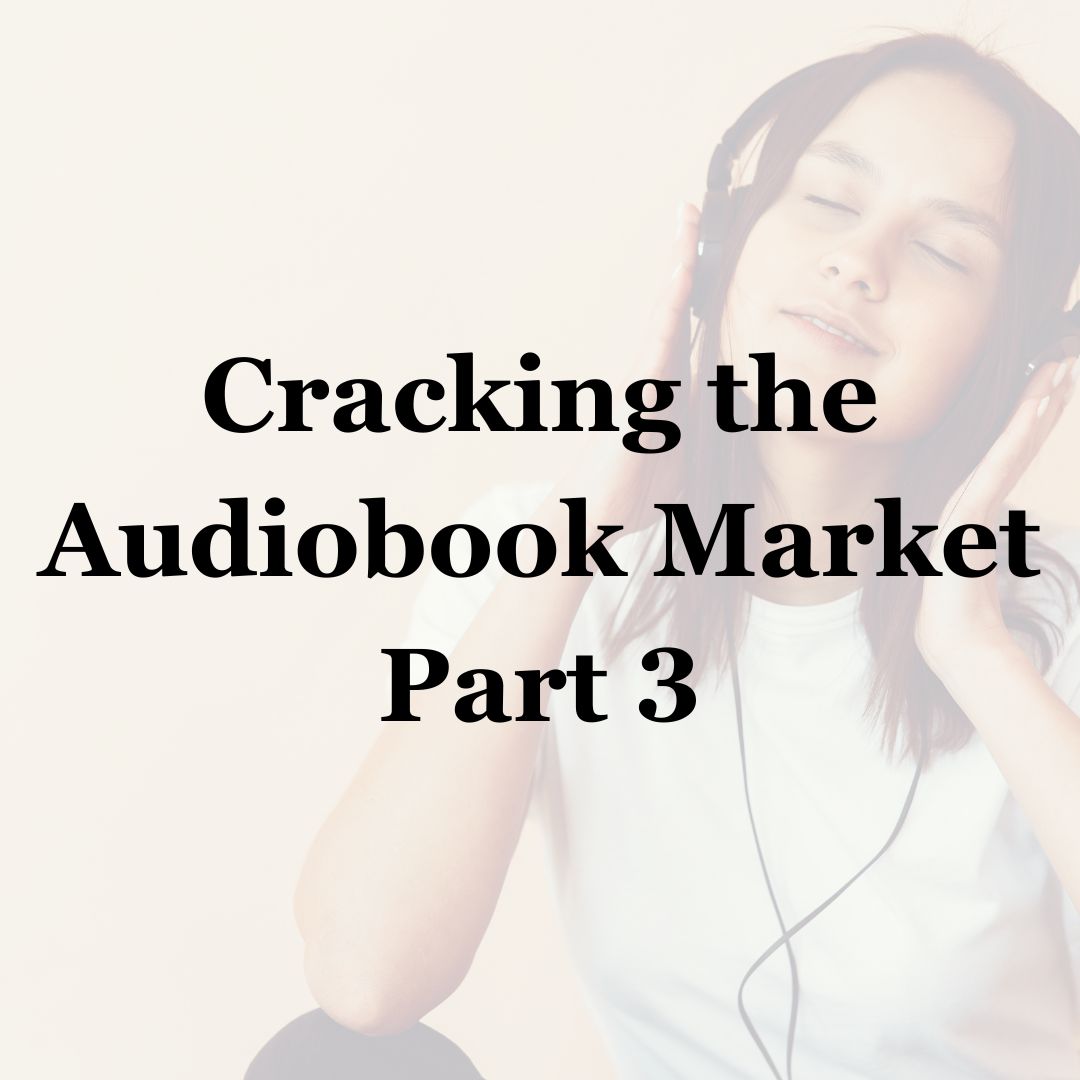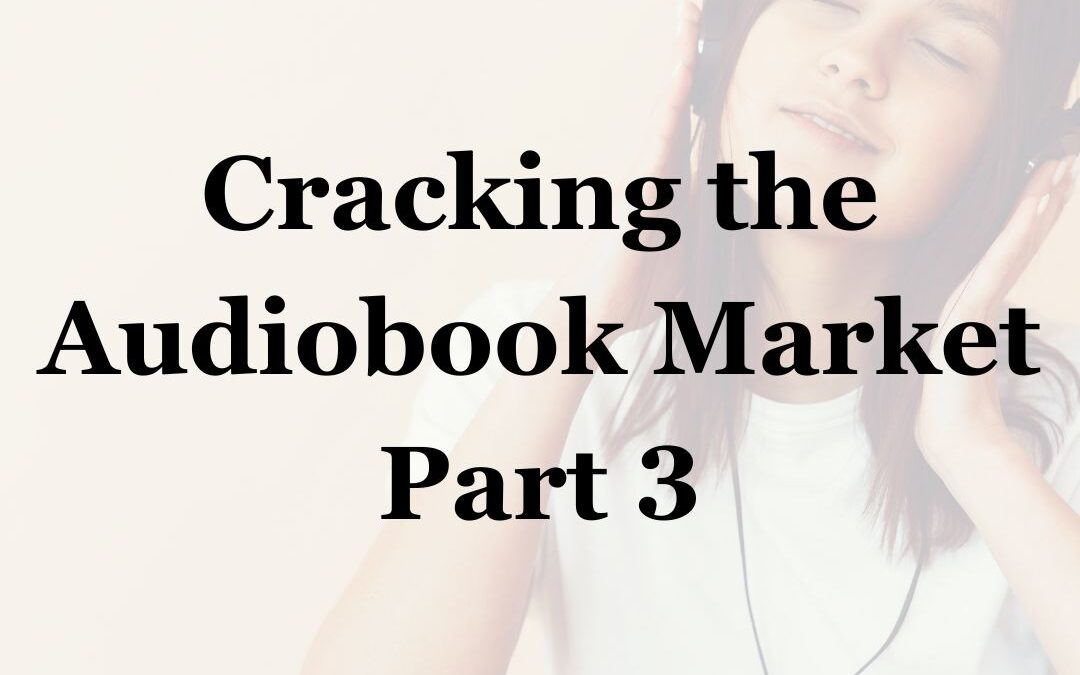Four Routes to the Audiobook Market

In Part 1, I laid out the case for getting into audiobooks and for doing it sooner rather than later. In Part 2, I took you on the generic journey from text to audio. In this part we’ll explore the options within that generic journey and the pros and cons of each. Caveat: what decisions you make to follow any of these paths should be based on your career goals and personal values. Not everyone needs their royalties to pay the rent, but some absolutely do and need to pay close attention to their return on investment. Others have a little more leeway in taking a smaller return or even providing books free or discounted to libraries, if that fits their values. Those kinds of factors will always influence which path an author takes. There is no one true path, but here are my takes on them:
Assign/sell your rights to an audiobook publisher.
This is the equivalent of selling your print and eBook rights to a traditional publisher—large or small—for a royalty share or whatever financial arrangement you can negotiate. There are a number of audio-only publishers out there and they are growing. Check out Cracking the Audiobook Market Resource Guide for specifics. There are several advantages to this path:
- Requires the least involvement of the author (if that’s what you want).
- No upfront money. Like selling your print/eBook rights, the publisher takes all the risk. You might receive an advance and/or royalties. It depends on what you negotiate in your contract.
- You get a professional product.
- You get the prestige of a recognized publisher.
There are also a number of cons to this path:
- Of all the paths this is absolutely the least used for all the same reasons it’s hard to get your books printed by a traditional publisher: you almost always have to go through an agent and competition is fierce.
- Even if it happens, it’s likely to provide the lowest royalty payback of the various paths.
- You have the least control, just as with print/eBook publishers.
Hire a full service audio production company.
You’re the client and they work with you to produce the audio files (and sometimes arrange the distribution). You will still have to prep, possibly distribute, and definitely do the marketing, but the production company does everything else. Some of the pros of this approach:
- Less work than DIY or hybrid.
- You have a lot more control because you can work collaboratively with a full service organization.
- You get a professional product.
The major drawback? It’s the most expensive of all the options. Prices vary but $6000 is the average flat fee (at the time of this posting) for a 50,000 – 70,000 word novel. Some organizations charge per word (one charges 10 cents a word so my 120,000-word historical would cost $12,000). Others charge anywhere from $300 to $800 per finished hour. “Finished hour” is how long your book is when it is completed. Narrators typically read at an average rate of 9,300 words per hour, so you can estimate the length of the audiobook based on total word count of the manuscript. The more words in the book, the longer the recording, the more expensive the service.
Author do-it-yourself.
This is just what it sounds like: you do everything. Like most things in this life, it’s your time or your money. If you go with the full-service audio production company you’re paying big bucks and investing minimum time. If you DIY, you pay almost nothing, but invest considerable time. Here are the pros:
- It’s the least expensive option although there are a few small expenses if you’re starting from scratch. A good microphone will cost between $70 and $100. You don’t have to build a studio. We recorded in an interior linen closet muffled with quilts. There are free versions of audio recording and editing software.
- There are tons of free DIY resources out there. My favorite is ACX (audio creation exchange) which has an extensive DIY video “university” free to all creators. If you want to pay a small course fee there are also step-by-step courses with live coaches.
- AI – Artificial Intelligence tools are getting better and will continue to. They can help with everything from narration (caveat: many distributors, including Audible, will not distribute an AI narrated book–at this time), to QC, to tech adjustments. I’ll talk more about the pros and cons of using AI tools in Part 7 – “Market Trends.”
- You have complete control over everything related to the project. (Some folks might not want this, others may find this attractive.)
- Last, but not least, you find and correct errors in your text. Reading your book aloud also helps you find awkward sentences, confusing homonyms, and other flaws you can correct in your print/eBooks. Some folks recommend doing your audiobook before finalizing the print/eBook versions so you can put out the cleanest product possible in the other formats. Reading your book aloud can make you a better writer.
The cons to this path can be daunting to some people:
- Readers prefer professional narrators for fiction, unless you’re a really famous author like Neil Gaiman. He reads all his own stuff, and people love it, but not everybody is Neil Gaiman. If you’re publishing non-fiction or memoir, readers prefer the author narrate, but they also want a professional read. If you don’t regularly do public speaking, you might want to hire a director or coach to help with your delivery.
- The scariest con for most people is the learning curve for the tech and the software: learning how to record, edit, and master. If you’re new to this, it will take time and effort, but there are lots of free resources to help you learn. Once you’ve learned it, things get easier each time you do it.
The hybrid model.
Here the author picks and chooses which steps they will do and outsources what they are unable or unwilling to do. I’ll do a deep dive on this option in the next post (Part 4) and show who can help with the outsourced tasks. The pros of this path are:
- It’s cheaper than partnering with a full service production house. You control what you’re outsourcing and how much you pay for it. If you have a network of talented friends and family, you might even barter services or recruit volunteers to help with the various steps and keep the cost to a minimum—something I’ve done for several of my books.
- You can use a professional narrator (if needed).
- Others can do the tech stuff.
- You have considerable control.
- As you’re working on your audiobook, you find and correct text errors.
The cons are a little less daunting that DIY:
- It can be more expensive than DIY unless you barter services or recruit volunteers.
- There is still a learning curve on using any hardware, software, distribution platforms, etc. But like DIY, once learned the next time is faster and smoother.
- “It’s your time” with this path. The author is the producer/publisher. You have to organize all the parts and make sure all the outsourced steps are done to your satisfaction.
To summarize the four paths:
- Selling/assigning your audiobook rights to an audiobook publisher is the cheapest way to get a professional audiobook to market, but is the hardest to make happen.
- Hiring a full-service audio studio is the most expensive way to get a professional product, but requires the least time and involvement by the author.
- Author DIY is very inexpensive but will require extensive time and effort if the author has no familiarity with the hardware and software tools. Help is out there, but it’s still work.
- The hybrid path where the author manages the project and outsources whatever steps they wish, allows for the maximum flexibility on how much time and money the author puts in.
Which path you chose depends on how you want to spend your time and money, your current resources, and your career goals. In Part 4, I’ll take a deeper dive into the hybrid model and look at the some of the resources available to authors for their outsourcing options.
Faith L. Justice has ten books out in audio. She learned these lessons the hard way so you don’t have to. This series of posts is an expanded text version of a presentation she made to the New York City Chapter of the Historical Novel Society. The original video is here.
